Table of Contents
For Christina and Mack
And to the memory of Stephen Keller, who went and saw the world
I.
 CAPITAL
CAPITAL Walls
WallsThe first important fact to know about China is that it has a lot of Chinese people in it. I always knew it, sort of, the way everybody in America knows it. The way we know that Antarctica is pretty cold or Germany is unusually efficient. Theres a billion of them, the Chinese: 1,000,000,000. Big number.
The actual figureI checkedis more like 1.3 billion. That means the rounding error, that stray 0.3 billion, is as big as the entire population of the United States.
But I already knew the numbers, more or less, before I ever got to China. The reality behind the numbers was something else. It began to register with me at the Great Wall, at Badaling. I arrived there in August 2004, my first time on the Chinese mainland. It was almost exactly four years1,458 days, to be exactbefore Beijing was scheduled to host the Summer Olympics. This meant very little to me at the time. Experts were proclaiming or warning that the world was at the dawn of a Chinese Century, and China saw the Olympics as a chance to prove the proclamations true, to demonstrate that its capital city had become a great global metropolis. Though I didnt yet know it, I would be living through that demonstration from the inside. I would become the audience for the display of the New China and a part of the display itselftied to Beijing by habit and blood, but still a foreign body, for China to tolerate or not.
First, though, I was a sightseer. Badaling was one of the closest stretches of the Great Wall to the capital, in the mountains about an hour north of the city. Tourists in search of the authentic, ancient China prefer to go farther afield, to the more desolate and ruinous parts of the Wall. I was not looking for optimal tourism; I was jet-lagged and baffled by everything around me, and my Chinese-born father-in-law took charge of the project, leading the way to the bus depot and buying a pair of round-trip tickets. I followed.
The global metropolis, where the bus passed through it, was a mass of apartment towers and unidentifiable commercial buildings, tall and bulky but loosely spaceda bit like Queens, if all the buildings in Queens were doubled in height. Rather than dwindle in size, the clusters of buildings gradually grew fewer in number as we passed out of Beijings urban districts. The road began winding its way through steep, picturesque hills, past river valleys. Sharp gray patches of rock cut through thick greenery on the slopes; shreds of mist and cloud hung down from the overcast sky. I began to think I understood the national tradition of nature poetry: the frayed green shawl... rocky shoulders...
Then we hit the traffic jam. Between its embankments, the road was clogged with buses, all of them closing in on the Great Wall site. They curved ahead, around the bend and out of view. Our bus stopped and showed no signs of moving again.
We got out to walk. The mist had become a fine but soaking rain, and a man was hawking ponchos right outside the bus for one yuanflimsy blue trash bags, basically, with hoods. Mine tore almost immediately, and I knotted the sides of the rip together as we trudged past the line of immobile buses, breathing in their exhaust. Water beaded on the impenetrable outside of the plastic, and the inside got clammy.
At last, past yet more poncho vendors, we reached it: the parking lot. Oh, and behind it, up the rise, there was the Great Wall, too. But first there were the buses, and the people getting off the buses, and then rows of stalls full of Great Wall knickknacks and Great Wall books and Great Wall T-shirts, with customers swarming the doorways. The people streamed up into the visitors center, where they filled a round theater to watch a 360-degree panoramic movie of the Great Wall.
And with only a few exceptions, they were Chinese. High-minded Westerners tend to think of tourismswarming, grasping tourismas a vice we carry with us. It is a mobile gravitational force surrounding white people, warping the pure and genuine local culture into a caricature of itself.
But there was no place for Western anxiety or guilt at Badaling. All the available room, psychological and otherwise, was filled by Chinese peopleChinese vendors selling Chinese-made kitsch to Chinese sightseers, all bundled in their clear blue Chinese ponchos. The Great Wall undulated along the ridgeline, softly framed by the mists, and an unbroken mass of blue ponchos undulated right with it, along the top, up and down the wet stone course, and steeply up again, toward the clouds. It could have been a scroll painting.
Beijing is a city of walls. Physically, it is shaped by nothing but itself. It does not harmonize with the natural landscape; it was not laid out along a fertile river valley, for instance, or wrapped around a secure harbor. It was definitely not placed to take advantage of a pleasant climate. The city was raised up, instead, where its rulers more than a thousand years ago saw the need for city wallsat the far end of a hot, dusty plain, at the foot of cold, windy mountains. The winters run long and the water supplies run short.
Emperors favored the site as the capital off and on through the centuries precisely because it was a nonplace: it occupied the spot where the northern frontier of Southern China faded into the southern frontier of Mongolia. From there (with the help, just to the north, of the principal Chinese wall, the most celebrated wall in the world) a ruler could knit together both regions. Genghis Khan seized the city from the Jin dynasty rulers, and his grandson Kublai made it the capital of his Yuan dynasty. The Ming dynasty seized it from the Yuan, and the Qing seized it from the Ming.
So old Beijing was centered on the seat of the emperorthe citys heart sealed off by the towering, dull-red walls of the Forbidden City, built in the fifteenth century. Inside, inaccessible, were the nested halls and courtyards of the palace complex, with only the gleaming yellow-tiled roofs of the buildings showing to the outside.
Those two colors, the red and the yellow of the Forbidden City, were part of the official Beijing 2008 Olympic palette: Chinese Red and Yellow Glazeor, in the international language of color, Pantone 186 C and Pantone 123 C. (They were joined by Scholar Tree Green and Blue and White Porcelain Blue.) The East was not simply red, it was twelve parts Pantone Warm Red, four parts Pantone Rubine Red, and one-quarter part Pantone Black.
The Olympic organizing committee also included, last on the color list, the other main shade of historic Beijing: a dead medium-dark gray. Color was for the emperor; that graythe essence of colorlessnesswas for the rest of the city. It spread outward from the palace, on still more walls: low, gray-brick ones surrounding the courtyard houses, or




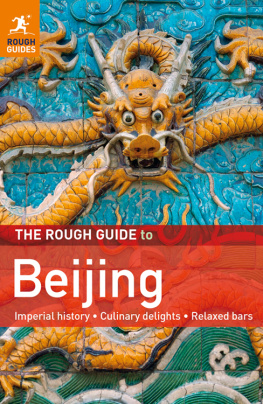
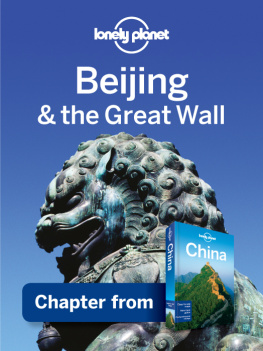
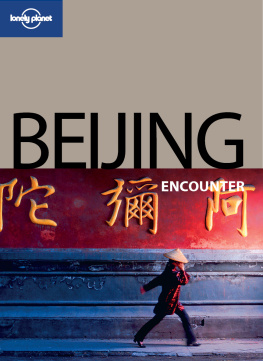

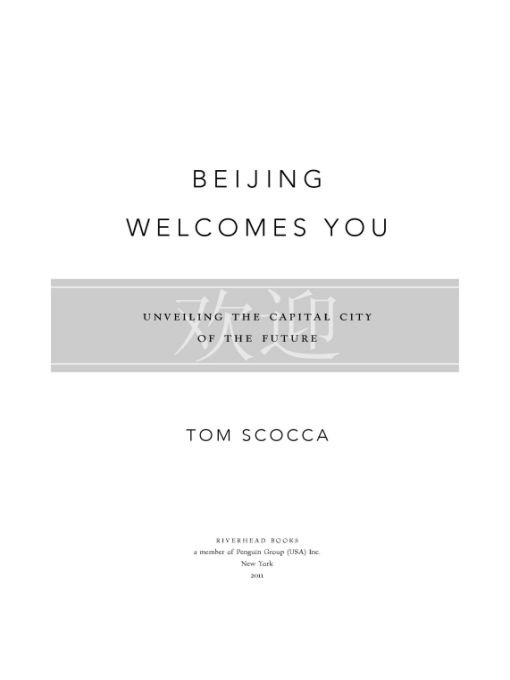
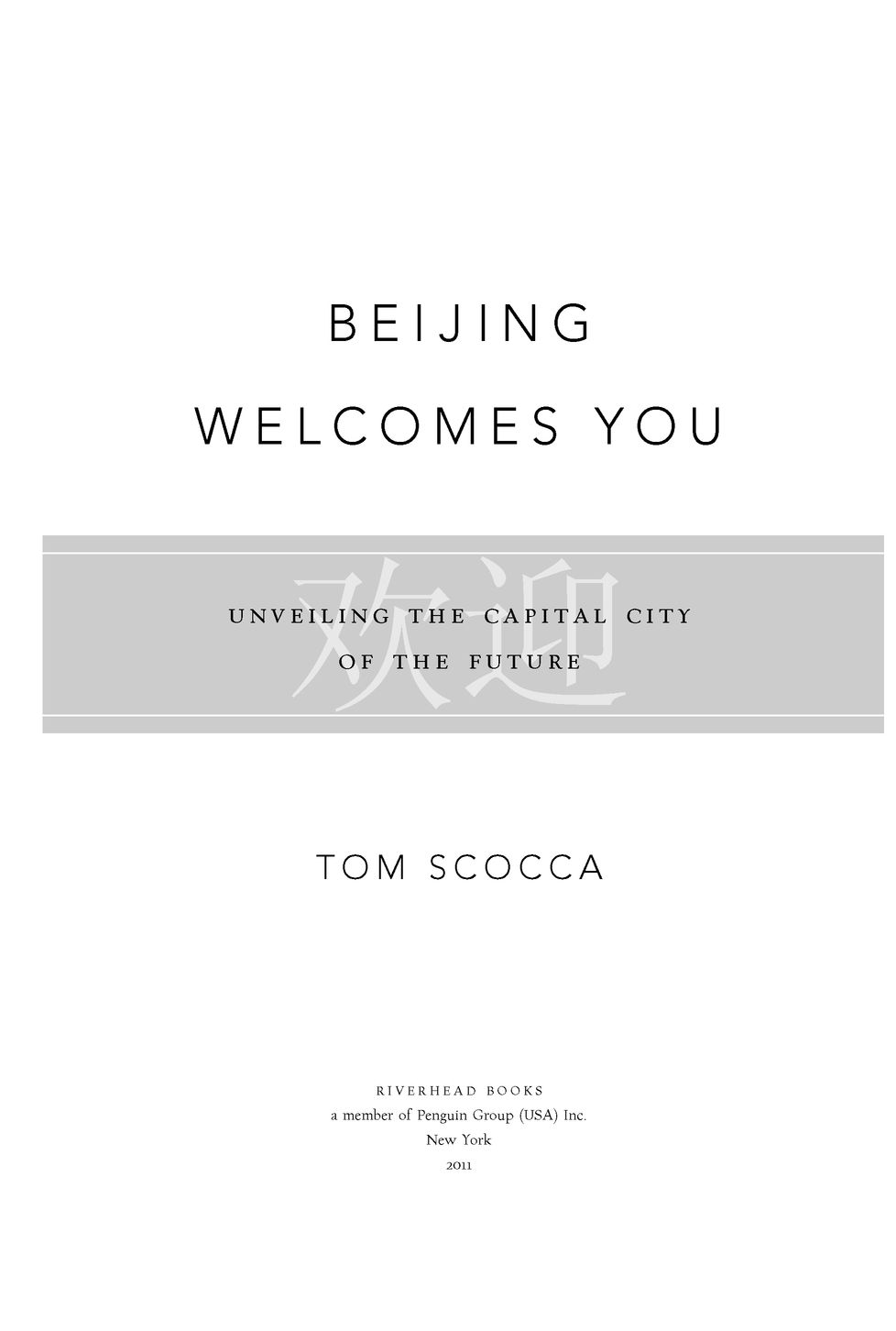
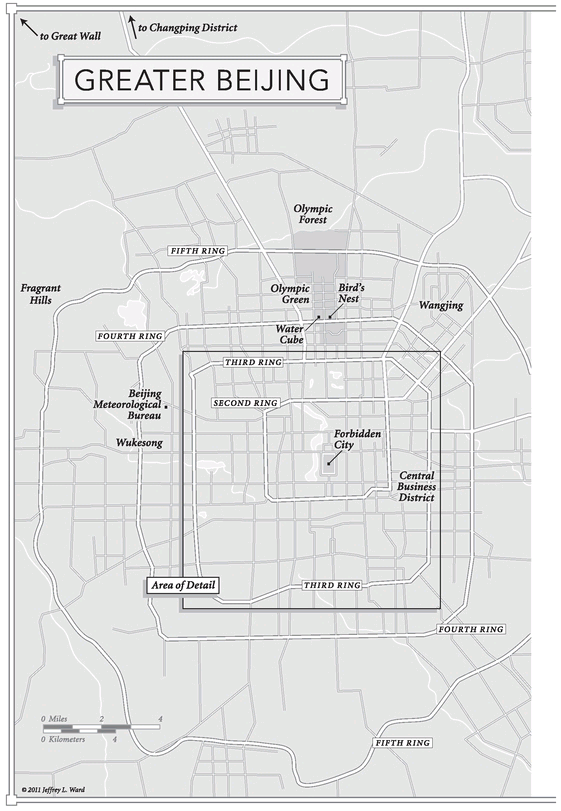
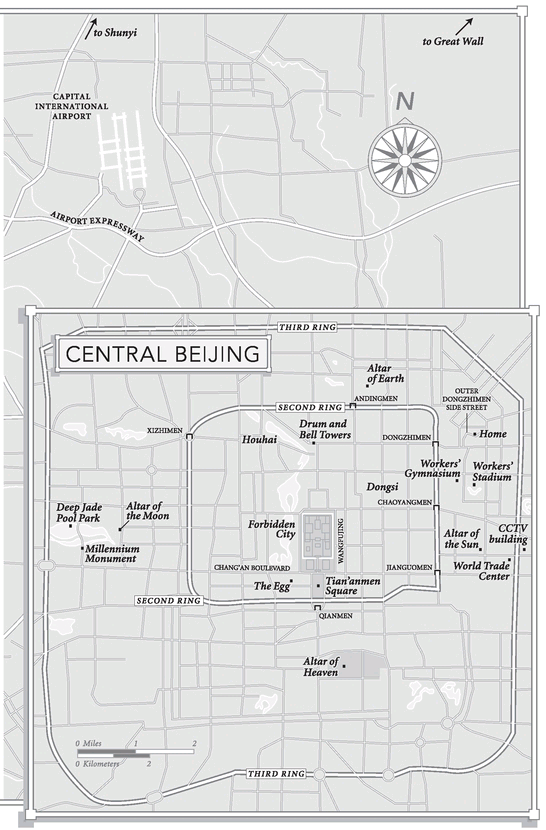
 CAPITAL
CAPITAL Walls
Walls